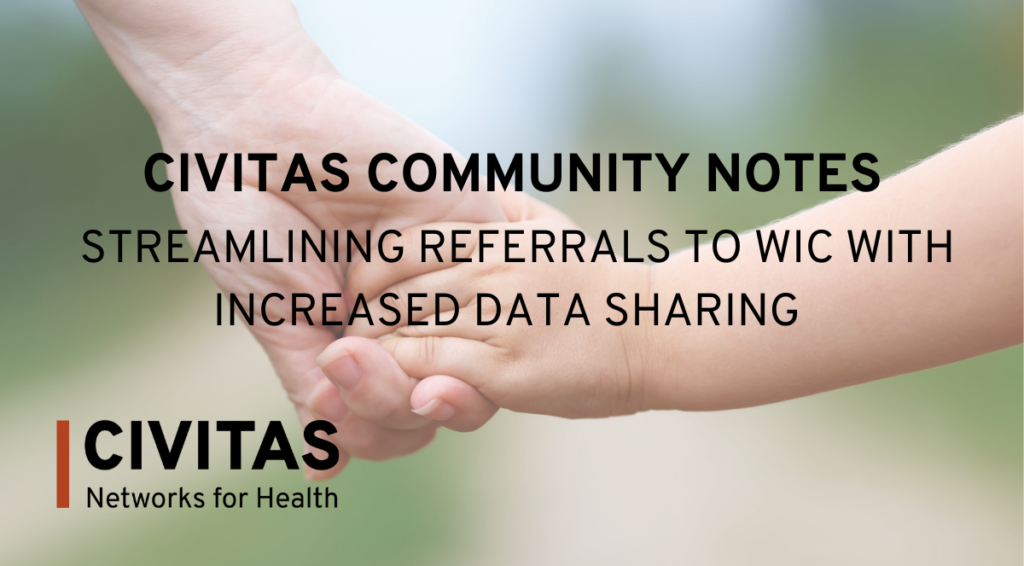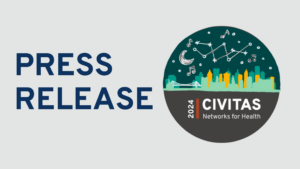Health Data Utility Community Stories – insights into state, regional, and local efforts that illuminate how health data utilities are advancing community health improvement efforts. The stories are intended to make the Health Data Utility Framework come alive, showcasing data in action.
Written by Jolie Ritzo, VP of Strategy and Network Engagement, Civitas Networks for Health
Introduction to Health Data Utilities
Emerging health data utilities (HDUs) are popping up in states across the country by building off existing health data infrastructure to meet the need for more comprehensive data sharing. These efforts aim to bolster public health and advance health equity; address unmet health related social needs, facilitate the transition to value-based care, and improve quality and overall care coordination.

There are key characteristics that make HDUs different from health information exchanges (HIEs) and data collaboratives, though it is important to note that HDU effectiveness builds on years of strategic investments in HIEs’ existing technical, organizational, and trust infrastructure, and community governed data collaboratives and health improvement organizations. These key characteristics are:
- Neutrality and flexibility in meeting stakeholders’ goals
- Broad geography
- Cooperative state and local leadership and broad governance
- Leverage state and local authority
- Designated authority
- Multi-stakeholder, cross-sector participation
- Inclusive governance strategy
- Sustainable financing
- Modular infrastructure and advanced technical services
Communities across the country are at various stages of HDU development and are developing unique approaches to support data sharing, given local infrastructure, financial resources, public-private market forces, and their specific needs.
This HDU community story features Civitas members Serving Communities Health Information Organization (SCHIO), Health Improvement Partnership of Santa Cruz County (HIPSCC), and BluePath Health.
Responding to Community Needs and Meeting Stakeholder Goals
There is a large and persistent gap between eligibility and participation in the US Department of Agriculture’s Special Supplemental Nutrition Program for Women, Infants, and Children (WIC) throughout the country, to the extent that in 2020 only 50% of WIC-eligible women and children were enrolled in the program. Referrals are often paper based, relying on individuals to submit paperwork to their local agency, and recertification in the program requires submission of certain clinical data to stay in the program, meaning families must collect and share their information with their WIC agency.
To address this gap as it exists in their counties, WIC agencies pursued unique programs to solve the same issues. In Santa Cruz County, a coalition of four local stakeholders came together to improve referral workflow and information exchange for eligible enrollees. The partners included the Community Bridges, Serving Communities Health Information Organization (SCHIO), Health Improvement Partnership of Santa Cruz County (HIPSCC), and Unite Us. Further north, the San Francisco Department of Public Health Maternal Child and Adolescent Health Section—the local WIC program in San Francisco County—worked on its own internal approach.
Approaches to Cross-Sector Participation and Governance
HIPSCC, a nonprofit regional health improvement collaborative (RHIC), acted as the neutral convenor of the partners in Santa Cruz County. HIPSCC committed to bringing together key stakeholders serving WIC-enrolled and eligible area residents from different sectors on a regular basis to first review current workflows, and then to develop new streamlined workflows and solutions. Bringing key players into the same room allowed for the sharing of diverse perspectives to reach common ground and to bring about more successful solutions. Most importantly, it was not until the partners worked through individual workflows together that they could uncover, understand, and ultimately find ways around the most significant barriers.
In San Francisco, the Department of Public Health charted a solution on its own given local circumstances. While the community does not have the same HIE infrastructure as Santa Cruz County, San Francisco County benefits from a robust public hospital system and large network of community health centers that serve most Medicaid beneficiaries and WIC-eligible individuals. Most of these provider systems, as well as most other private providers and health systems in the county, have migrated to utilizing Epic for their EHR. This local landscape shaped the Department’s internal decision to adopt its own instance of Epic to support documentation, referrals, and data sharing.
Using Advanced Technical Infrastructure and Services
Though they serve communities in the technology capital of the world, the community health centers and public hospital systems sending most of the referrals to WIC in both counties were still relying on paper and faxes for referrals, placing the onus on families to manually submit applications. As a result, the community previously struggled to make referrals and connect families to needed services at a sufficient scale.
Through the collaborative efforts of the partners in Santa Cruz County, electronic referrals are now routed directly from providers to WIC agency staff in real time using Unite Us, whereby WIC staff can then contact families with pre-filled applications to drive increased program participation. Providers in Santa Cruz also have single sign-on access to SCHIO to access the clinical information needed for recertification. On the other hand, San Francisco’s approach leverages Epic for both the sending of referrals to the Department of Public Health and for WIC staff access to read-only clinical data.
Sustainability and Collaboration
With a goal of streamlining referral processes for families, providers, and WIC staff, these efforts have proven to be successful. The experiences of WIC staff and families were prioritized, and in doing so, increased the buy-in for accepting new processes. The workflow improvements also safeguard previous concerns around consent and WIC privacy policies by maximizing the impact of one-way data sharing with WIC programs, which helps build trust, reduce duplicative data collection efforts, and ensure eligible women and children are receiving critical services. These two approaches reflect how HDU development is a bottoms-up process that stems from on-the-ground, community needs. Though at present these two programs’ approaches differ, there is potential for them to learn from each other and potentially converge to reflect ongoing changes in needs and health data infrastructure, especially given state and federal investments in data-sharing infrastructure to support Medicaid transformation.
Both programs intend to continue utilizing and refining these approaches and share their learnings with other communities so that they can leverage their local resources, whether an HDU, EHR, or other technology, to support access to WIC nutrition and lactation benefits for their fellow community members. Both the California WIC Association and the National WIC Association have highlighted this work.


